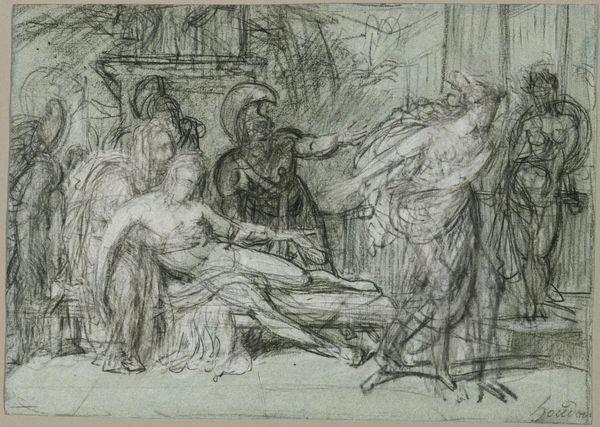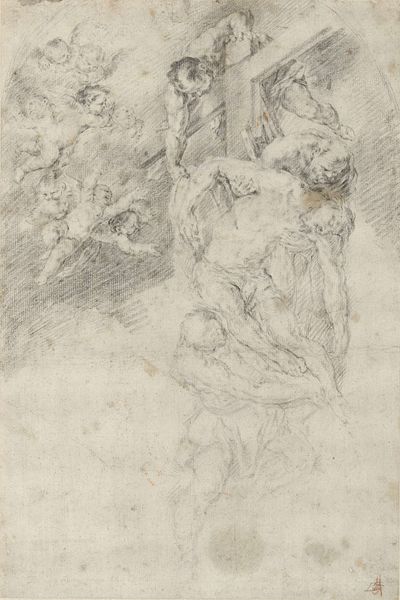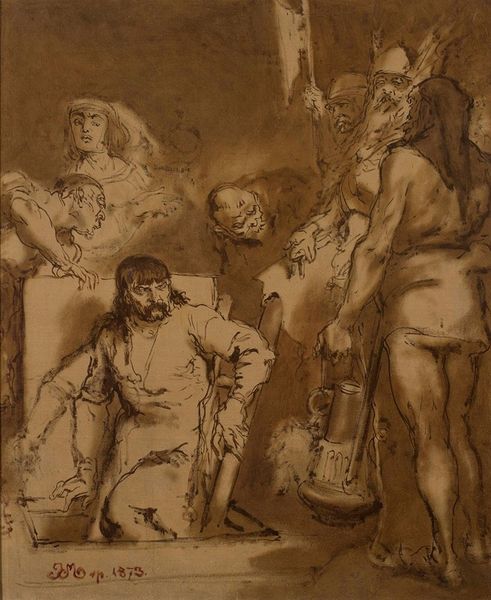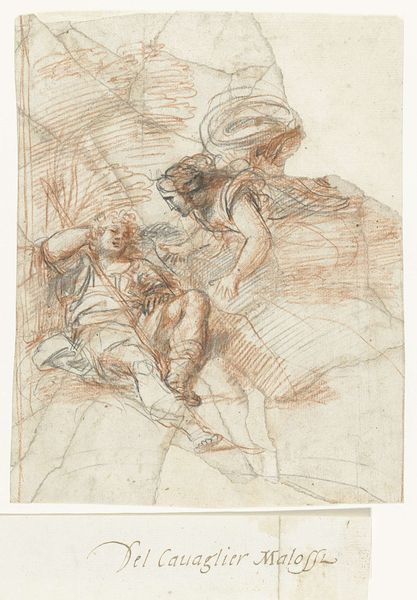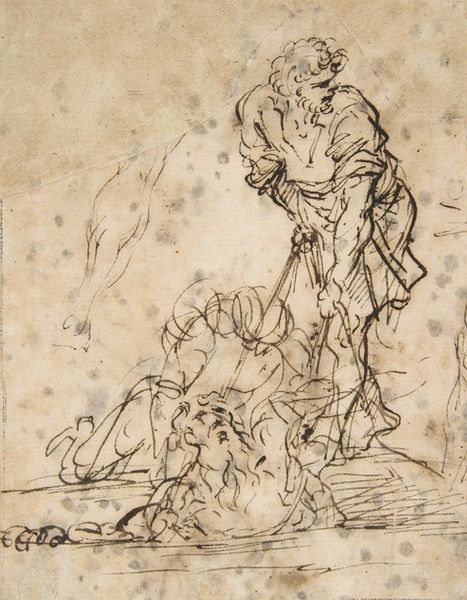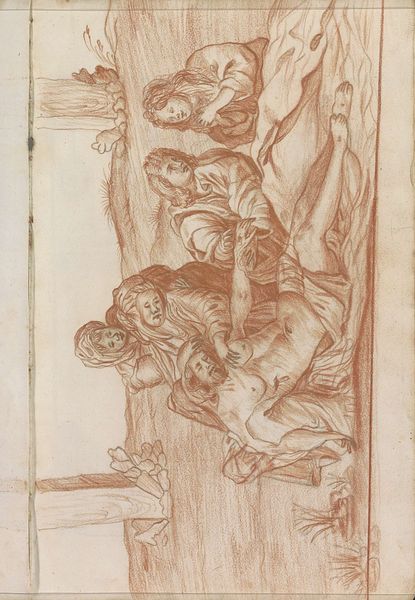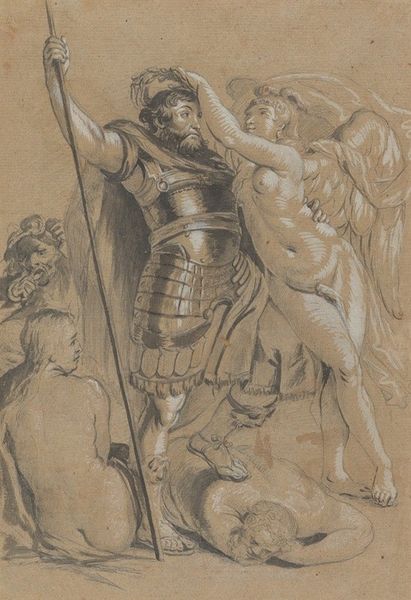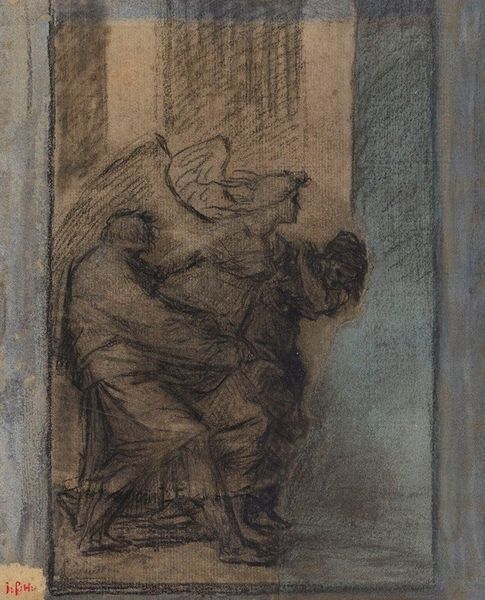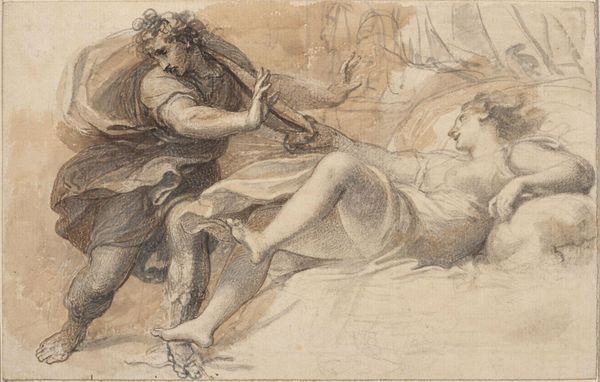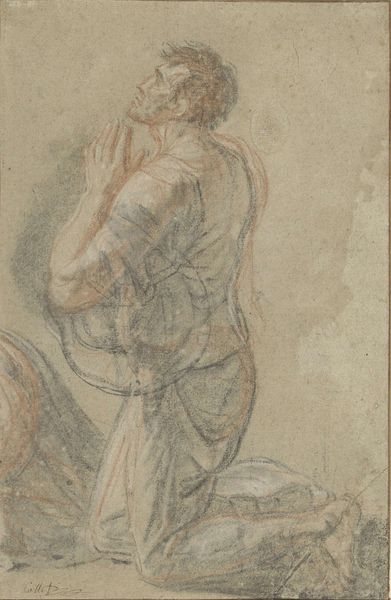
drawing, pencil, charcoal
#
drawing
#
pencil sketch
#
figuration
#
pencil
#
charcoal
#
history-painting
#
academic-art
#
realism
Copyright: Public Domain: Artvee
Pierre Puvis de Chavannes made this drawing, "Ecce Homo," in France, likely in the late 19th century. The image depicts the biblical scene of Pontius Pilate presenting Christ to a jeering crowd. The phrase "Ecce Homo," Latin for "Behold the Man," is what Pilate said on that occasion. In 19th century France, religious art was often a subtle commentary on contemporary social and political issues. Puvis de Chavannes lived through a period of immense upheaval, including the Franco-Prussian War and the Paris Commune. "Ecce Homo" reflects a sense of social unease and perhaps a critique of authority. The rough, unfinished quality of the drawing adds to this feeling of instability, contrasting with the polished academic style favored by the French Salon. To fully understand this artwork, we must consider the role of religious imagery in French society at the time and research the artist’s political leanings. These elements can offer a more complete interpretation of its cultural significance.
Comments
No comments
Be the first to comment and join the conversation on the ultimate creative platform.
